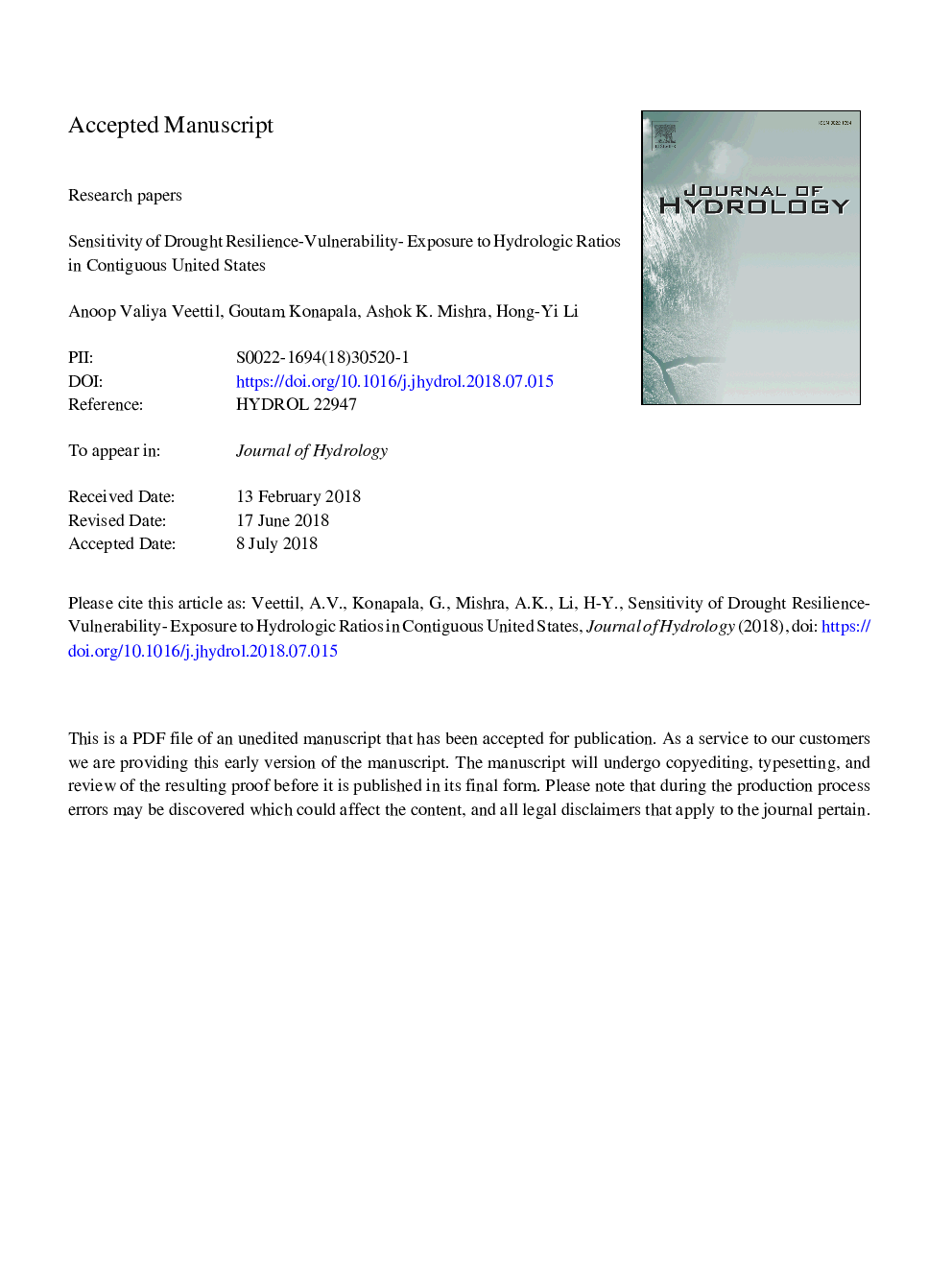| Article ID | Journal | Published Year | Pages | File Type |
|---|---|---|---|---|
| 8894473 | Journal of Hydrology | 2018 | 45 Pages |
Abstract
The atmospheric water supply and demand dynamics determine a region's potential water resources. The hydrologic ratios, such as, aridity index, evaporation ratio and runoff coefficients are useful indicators to quantify the atmospheric water dynamics at watershed to regional scales. In this study, we developed a modeling framework using a machine learning approach to predict hydrologic ratios for watersheds located in contiguous United States (CONUS) by utilizing a set of climate, soil, vegetation, and topographic variables. Overall, the proposed modeling framework is able to simulate the hydrologic ratios at watershed scale with a considerable accuracy. The concept of non-parametric elasticity was applied to study the potential influence of the estimated hydrologic ratios on various drought characteristics (resilience, vulnerability, and exposure) for river basins located in CONUS. Spatial sensitivity of drought indicators to hydrologic ratios suggests that an increase in hydrologic ratios may result in augmentation of magnitude of drought indicators in majority of the river basins. Aridity index seems to have higher influence on drought characteristics in comparison to other hydrologic ratios. It was observed that the machine learning approach based on random forests algorithm can efficiently estimate the spatial distribution of hydrologic ratios provided sufficient data is available. In addition to that, the non-parametric based elasticity approach can identify the potential influence of hydrologic ratios on spatial drought characteristics.
Related Topics
Physical Sciences and Engineering
Earth and Planetary Sciences
Earth-Surface Processes
Authors
Anoop Valiya Veettil, Goutam Konapala, Ashok K. Mishra, Hong-Yi Li,
